Locks have long been thought to be the best way to secure a door. However, if a lock fails, if the door lacks a lock, or if you don’t trust the current lock in an apartment or condo, you may want to take steps to secure the door and the home.
While installing, rekeying, repairing, or replacing a lock is the best solution, the following ten methods show how to secure a door closed without a lock. Each is a quick, temporary fix that will allow you to get a good night’s sleep while you wait for the locksmith to arrive in the morning.
Rope or Belt
Most of the time, lever-style door handles are easier to lock than knob-style door handles because a belt or rope can be used to stop the handle from moving. Simply tie one end of the belt or rope to the handle and the other to a stationary object. When the handle can open both upwards and downwards, consider using two tethers to completely prevent movement.
Because the tether can be attached to a heavy object, such as a refrigerator or couch, a belt or piece of rope is also a good option for securing an outward opening door. Wrap the tether around both handles of French doors to prevent them from opening.
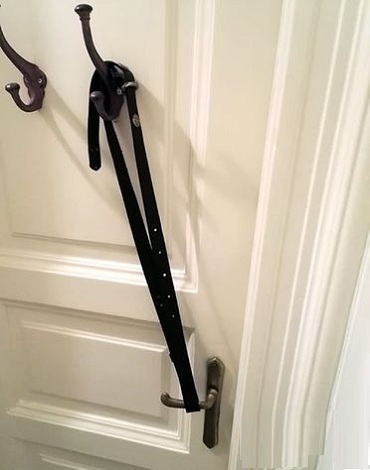
Portable Door Lock
These handy devices are ideal for renters and travelers who are unable to install more permanent solutions. As its name suggests, a portable door lock is designed to be installed and removed on demand. They typically consist of a metal piece, known as a claw, that fits over the existing doorknob’s bolt or latch and a lock that fits into the claw to stop the door from opening. To open doors from the outside, however, these locks are ineffective.
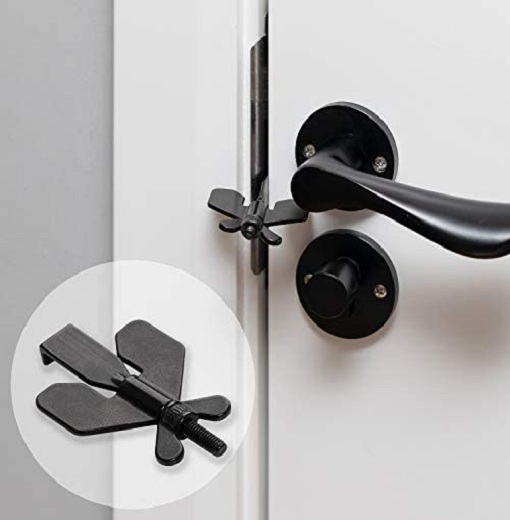
Fork
In an emergency, a fork can be used to temporarily lock an inwardly opening door. To lock the door, bend the tines of the fork so that the tips fit into the door latch and the rest of the fork fits comfortably in the space between the door and the doorframe when the door is closed.
Open the door and take out the fork, then break off the fork’s handle. Close the door by inserting the fork’s head back into the door latch, making sure that the bent tines are securely hooked to the door latch. Close the door and slide the fork handle through the tines to create a horizontal barrier that stops the door from opening inwards.
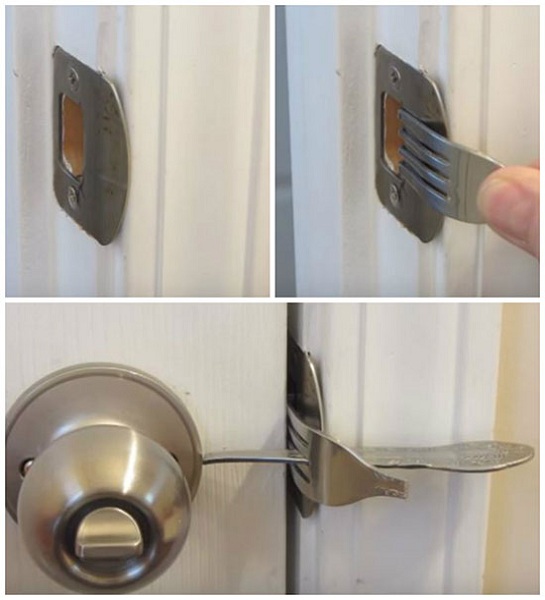
Door Jammer
A door jammer is a simple alternative to do-it-yourself solutions for locking a door without a lock. These tools are typically made up of a height-adjustable security bar with a rounded end that fits snugly under a doorknob or door handle. The other end has a padded foot designed to sit flat on the floor and resist sliding, resulting in a system that applies pressure to the floor if the door is opened inwards.
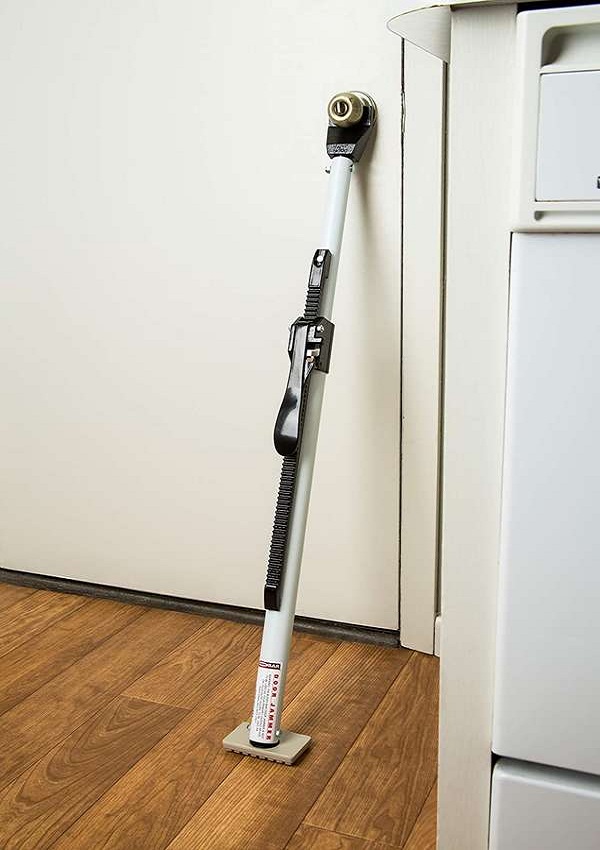
Floor Barricade
Floor barricades are composed of two parts: a base and a brace that can be inserted into or removed from the base. Insert screws through the base and into the floor to secure a floor barricade.
When the brace is removed, the door should still be able to open over the top of the base and be used freely.
Simply insert the brace to prevent the door from opening inwards when you want to lock it. A floor barricade is a good option for people who have the ability to modify their home, but it is not an option for renters and travelers.
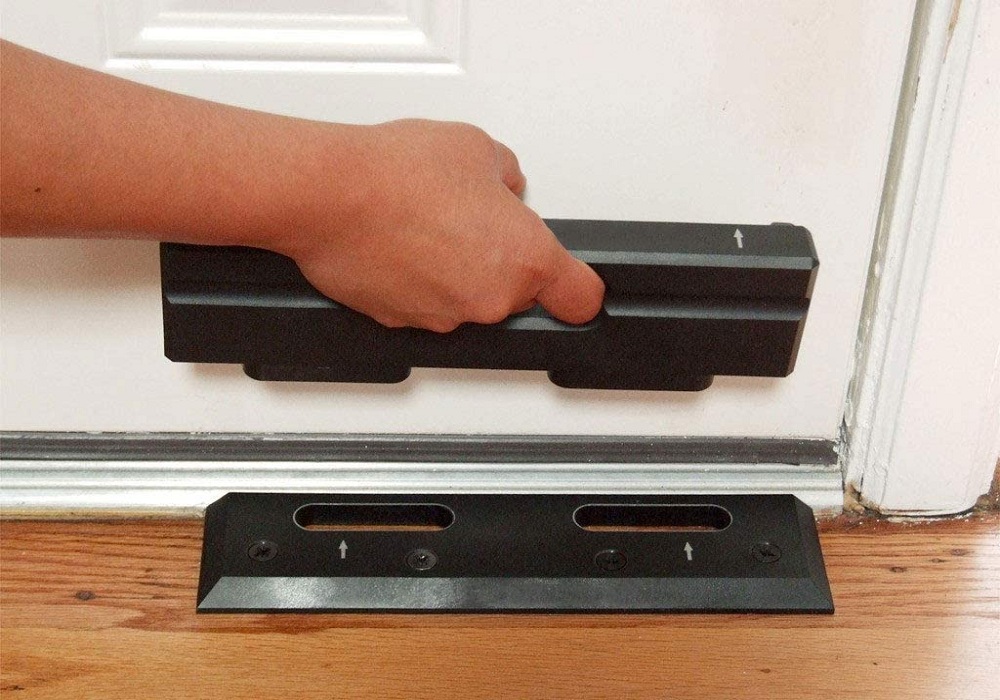
Remove Door Handle
While this isn’t the best option for keeping the door secure, it does present a challenge to anyone attempting to gain access to the home. The door cannot be opened in the traditional sense without a handle, but anyone interested in using this technique should keep in mind that the door mechanism can be turned even without a handle with enough effort and one or more makeshift tools. This option should be combined with another temporary door lock, such as a doorstop or even a barricade.
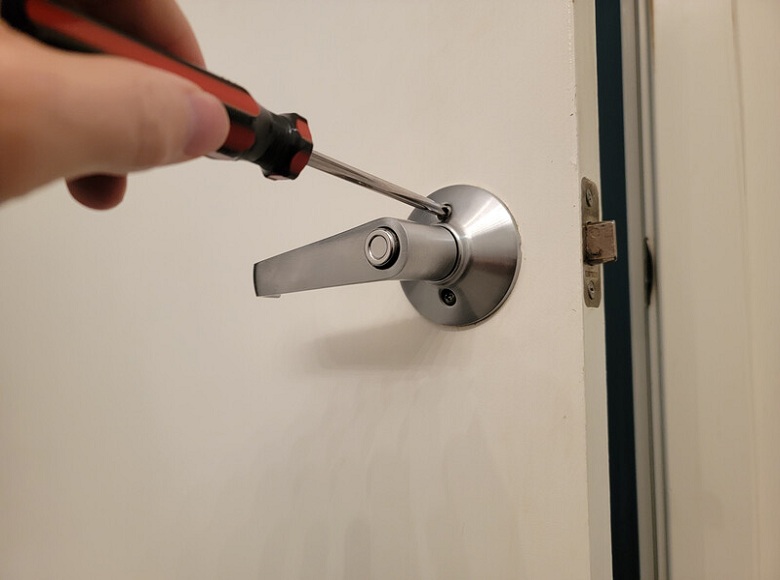
Strike Plate Lock
You can secure your door with a strike plate lock by attaching it to the door frame. It functions similarly to a standard door chain lock, with the exception that the strike plate lock has a metal loop that slips over the door handle to help stop the door from opening. This method is more secure than relying on a set of screws on the back of a door to prevent break-ins. Users can also use the existing strike plate screw holes to install a strike plate lock, preventing further damage to the door frame.
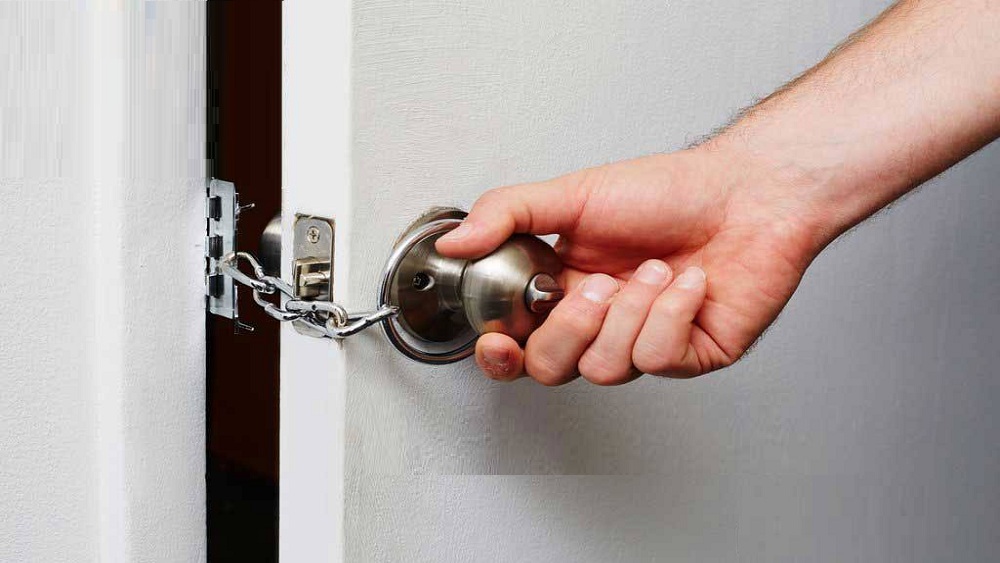
Doorstop
Doorstops are typically used to keep doors from closing, but when placed behind an inward opening door, this simple product physically prevents the door from opening, even if the doorknob can be turned.
When the door lock is broken, it’s a simple, effective way to help secure the home. It will not, however, work on outward opening doors, and with enough force, an intruder may be able to bypass the doorstop.
Consider using an additional method from this list for added security.
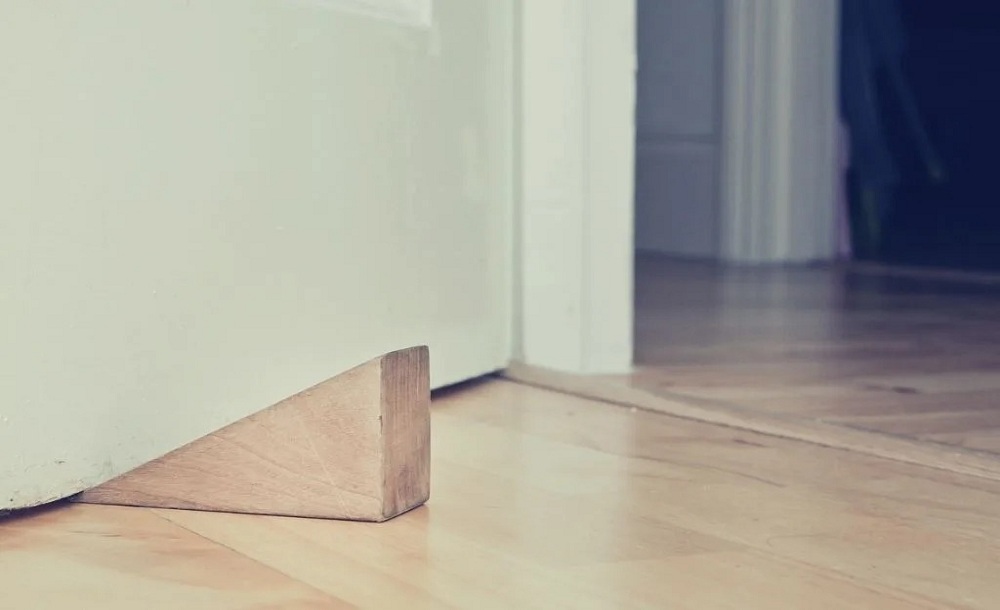
Security Bar
Security bars can provide better protection against significant force, such as an intruder attempting to kick down a door or break it down with their shoulder. Depending on the product, security bars or barricades are made up of a pair of heavy-duty brackets that are attached to the wall or door frame.
The brackets are then filled with a thick metal or wood bar that spans the entire width of the door. When you need to use the door, simply lift the security bar up and out of the brackets, and then replace it quickly and easily. Security bars are ineffective at securing doors that open outwardly.
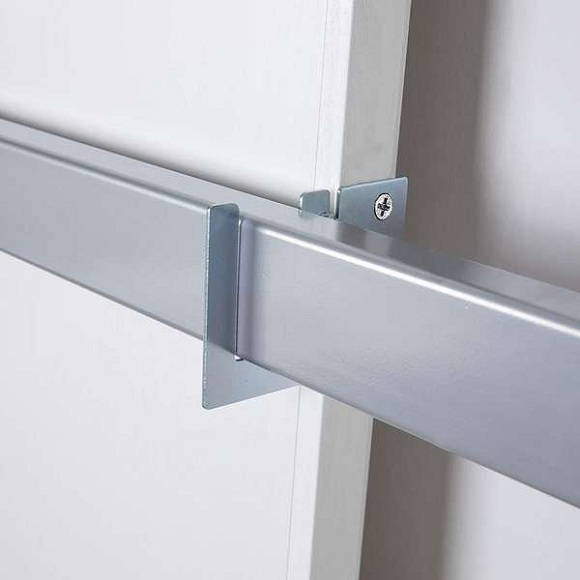
Back of a Chair
Having a sturdy chair that can be angled to fit the top of the chair under the door handle while the feet are firmly planted against the ground is a good option to keep a door closed. This puts pressure between the door and the floor along the chair’s back and legs, preventing the door from opening.
The chair’s back can also prevent lever-style door handles from opening downwards. If the handle can also be turned upwards to open the door, this method is no longer as useful. In this case, tying the lever handle to the chair with a belt or rope may prevent it from opening downwards or upwards.


